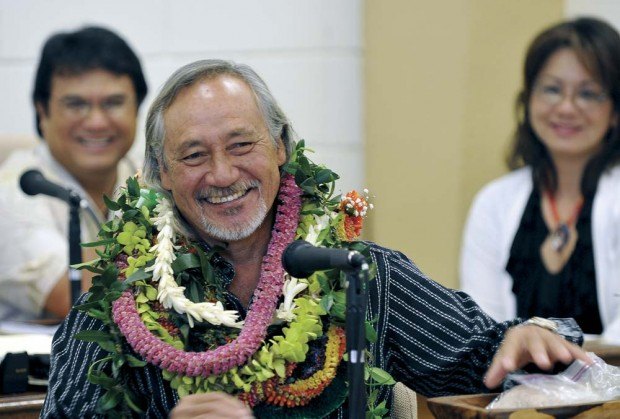NAWILIWILI — The Kaua‘i County Council last week introduced legislation that residents said was inconsistent with the “spirit and letter” of a charter amendment designed to control the growth of tourist accommodations on island. “The ordinance before you today has
NAWILIWILI — The Kaua‘i County Council last week introduced legislation that residents said was inconsistent with the “spirit and letter” of a charter amendment designed to control the growth of tourist accommodations on island.
“The ordinance before you today has far too many exemptions with ‘legalese’ terminology allowing negation of the charter amendment’s purpose,” said Kapa‘a resident Rich Hoeppner, who was involved with the citizen petition to put the amendment on the ballot in 2008. “This entire ordinance has the appearance of a way to get around the charter amendment and find ways to allow non-compliance.”
The council on Wednesday unanimously voted to send proposed Draft Bill 2386 to the Planning Commission for its review and recommendations. After working on it, the commission will send the bill back to the council for its approval.
Departing Councilman Daryl Kaneshiro, who introduced the bill, said this action will set things in motion.
“This whole process could take a year,” said Councilman Jay Furfaro, who is expected to chair the newly elected seven-member legislative body after its inauguration Dec. 1.
Voters approved the amendment more than two years ago by a two-to-one margin and it has since been codified. While not a legal requirement, community members said the intent of the amendment was for the council to enact a rate-of-growth ordinance.
The county has spent tens of thousands of dollars on legal counsel to advise the council on how to proceed, but nothing concrete was put forward until the final meeting of the 2008-2010 council.
The amendment gives the council exclusive power to process and issue permits for more than one transient accommodation unit, including hotels, condos, timeshares and vacation rentals.
But the amendment also gave the council the authority to pass that power back to the Planning Commission, so long as it enacted an ordinance that limits the rate of increase in the number of transient accommodation units in the county to no greater than 1.5 percent annually, or such growth rate that is within the planning growth range of a future general plan.
Based on page-count alone, Draft Bill 2386 stands in stark contrast to the charter amendment. The proposed legislation has 10 pages to the amendment’s one.
The bill also has a key blank that council members said they are counting on the commission to fill in. Unknown is how many transient accommodation units exist on Kaua‘i as of Dec. 5, 2008.
The proposed legislation would weaken some aspects of the charter amendment. For instance, the draft bill states that the council finds “it would be unfair and inequitable, and in violation of applicable legal principles, to apply Charter Section 3.19 to any resort projects which are currently existing and/or under construction where substantial sums have been expended…”
David Diner — speaking on behalf of 1000 Friends of Kaua‘i, Sierra Club and the Coalition for Responsible Government — urged the council to modify the ordinance so it concurs with the wishes of the electorate. He recommended holding a workshop on the bill in January.
“I’m glad to finally see something happen after two years of the voters speaking,” Kapa‘a resident Ken Taylor said, echoing the sentiments of others who testified.
Furfaro responded to Taylor, saying he had “no idea” of the dialogue it took to bring the bill to this stage.
Taylor agreed, saying the council failed to provide status reports to the community.
Representing the development community, Tom Shigemoto of A&B Properties said he supports finding a “resolution” to the “very loose, very broad” charter amendment that affects all non-primary residences.
“We want some kind of direction … so we know how we can proceed in our developments,” he said.
Shigemoto, a former county planning director, said he would “go crazy” trying to determine how to implement the amendment if it reached his desk while he was serving in that capacity.
Councilman Tim Bynum said both sides can agree that this is a “complicated issue” and there is a need for “predictability and stability in land use plans.”
While he had not seen the proposed legislation until it came on the agenda, Bynum said he has faith in the public process in which the bill will be vetted.


